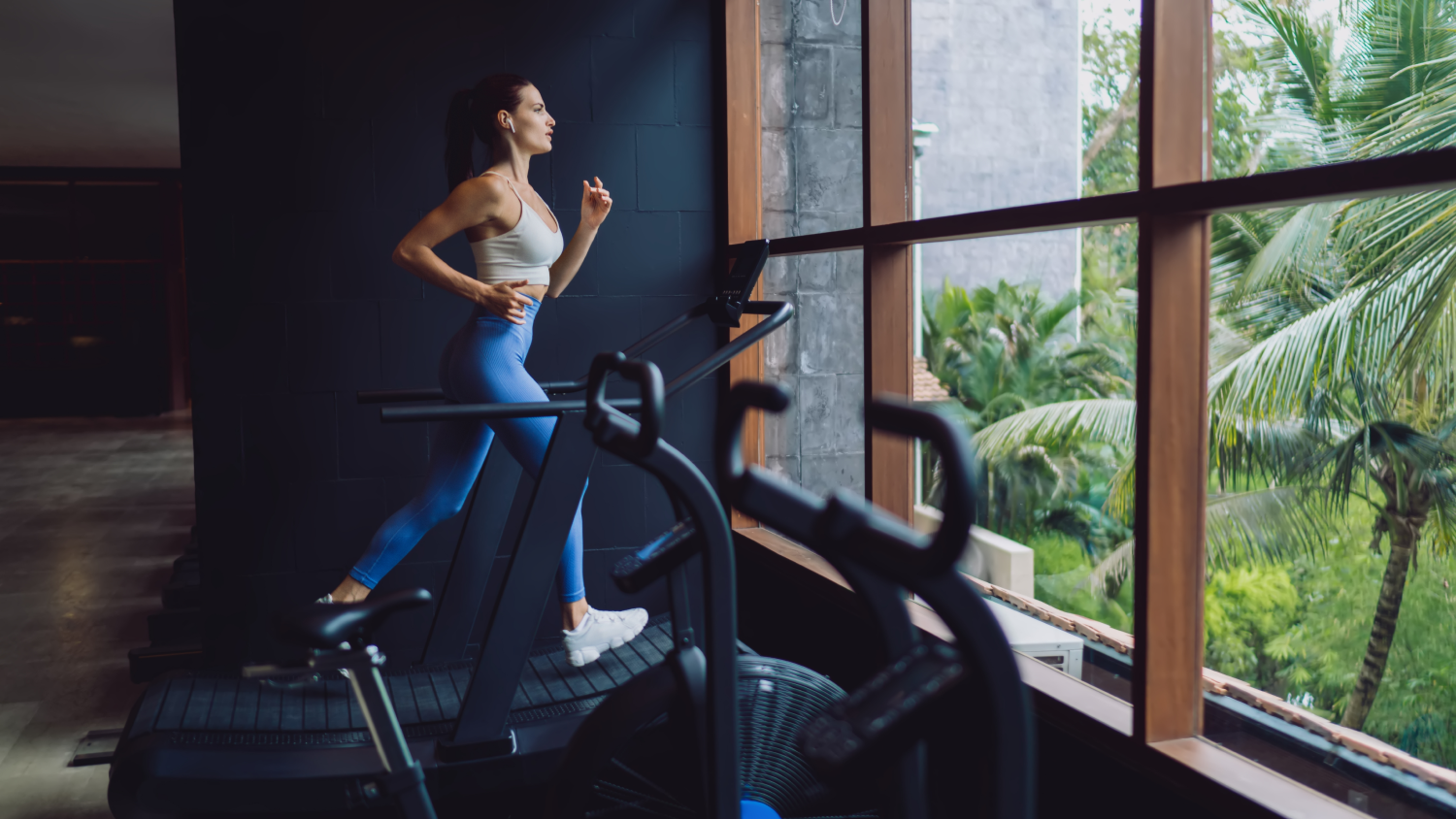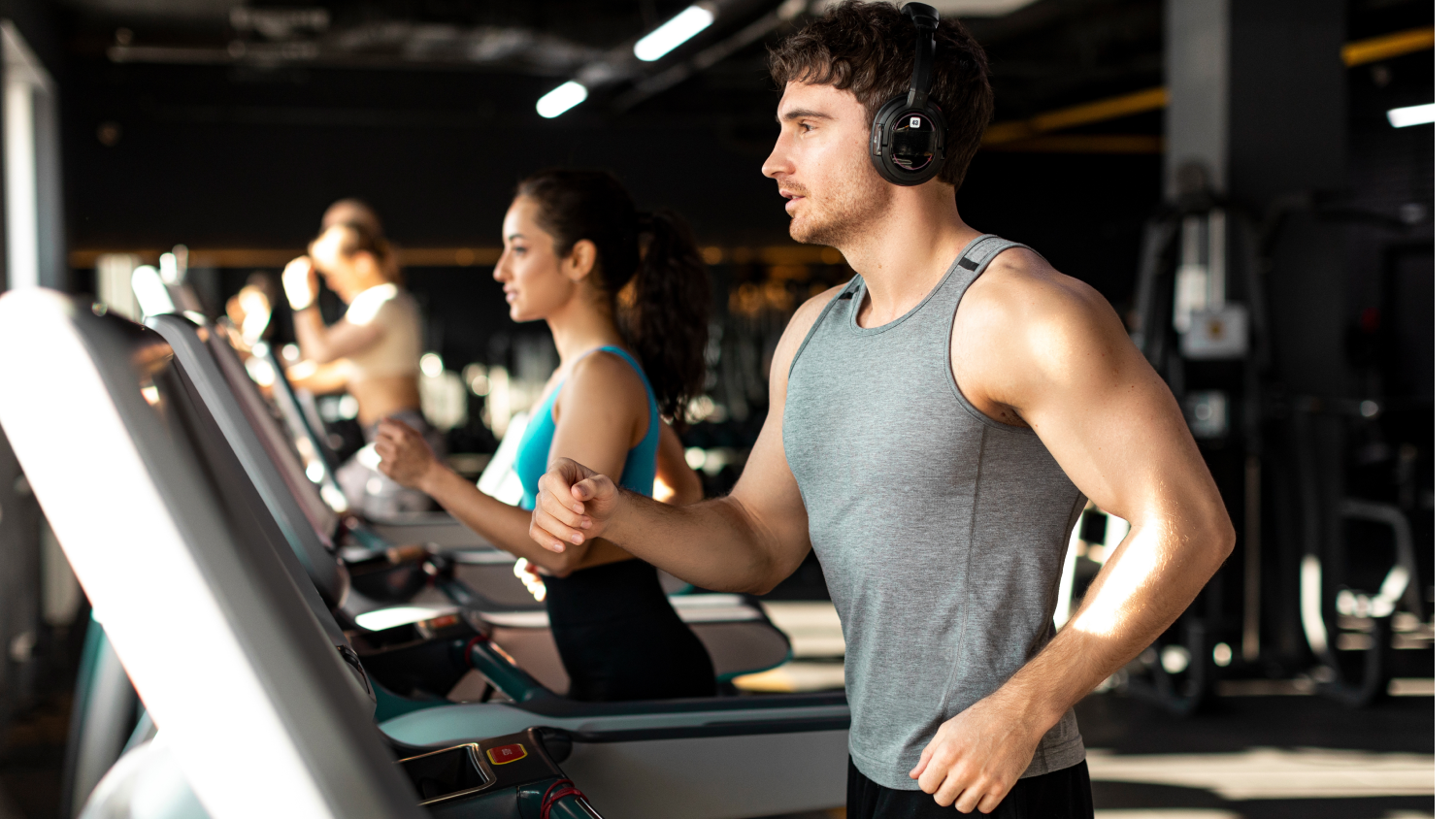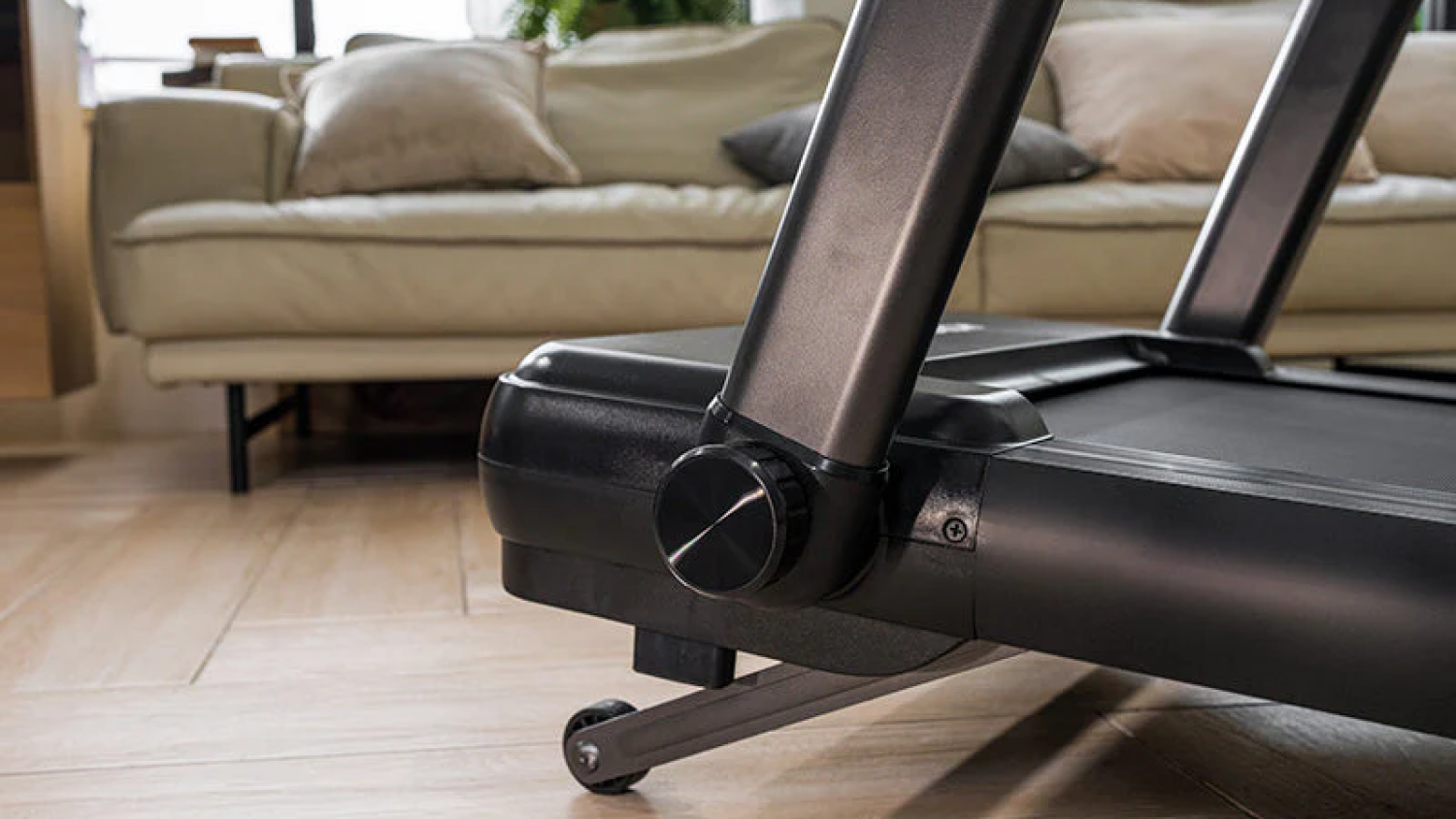Let's face it – buying a treadmill is a big deal. It's not just about swiping your credit card and bringing home a fancy new toy. It's an investment in your health, your home, and your wallet. But here's the thing: so many folks end up with buyer's remorse because they rushed into a decision without knowing what to look for.
At Merach, we've helped thousands of customers find their perfect fitness match, and we've seen the same mistakes pop up time and again. That's why we put together this no-nonsense guide to help you avoid the pitfalls that trip up so many treadmill shoppers.
Whether you're a first-time buyer or looking to upgrade your current machine, these insights will save you from headaches, disappointment, and wasted money. Let's dive into the five biggest mistakes you should dodge when shopping for your next treadmill.
Mistake #1: Ignoring Your Weight and Height Requirements
One of the most common and costly mistakes we see is people buying treadmills that simply aren't built for their body type. It's like trying to fit into pants that are two sizes too small – uncomfortable and setting yourself up for failure.
Why This Matters So Much
Treadmills come with specific weight capacities for a reason. When you exceed that limit, you're not just risking a breakdown – you're putting yourself in danger. The motor strains, the belt wears unevenly, and the frame can literally buckle under pressure. What started as a fitness journey quickly becomes an expensive paperweight.
Similarly, your height affects how comfortable you'll be while walking or running. Taller users need longer decks to accommodate their stride length. If you're 6'2" trying to run on a treadmill with a 50" deck, you'll feel cramped and might even alter your natural gait, which can lead to injuries.
Getting It Right
Here's a simple guide to follow:
-
For walking only: Look for a treadmill with at least a 50" deck length and a weight capacity that's at least 50 pounds more than your current weight.
-
For running: You'll need a minimum of 55" deck length (60" is better if you're over 5'10"), and a weight capacity that exceeds your weight by at least 50-100 pounds.
-
For multiple users: Always buy for the tallest, heaviest user in your household. A treadmill that works for everyone is worth the extra investment.
Our NovaWalk W50 TrekPad supports users up to 400 lbs, making it perfect for larger users or households with multiple people. Remember, buying a machine that properly supports your body isn't just about comfort – it's about safety and ensuring your investment lasts.

Mistake #2: Falling for Flashy Features Instead of Core Quality
We get it – those built-in fans, jumbo touchscreens, and 100+ workout programs look amazing in the store. But too often, people get dazzled by bells and whistles while overlooking what really matters: the fundamentals.
The Core Components That Actually Matter
When you strip away all the fancy extras, a treadmill is essentially three key components:
-
The motor – This is the heart of your treadmill. A weak motor is like having a sports car with a lawnmower engine.
-
The running belt and deck – This is where the rubber meets the road (literally). Poor quality here means uncomfortable workouts and early replacement.
-
The frame – The skeleton that holds everything together. A wobbly frame makes for an unstable, potentially dangerous workout.
What Gets Overlooked
Motor quality: Many manufacturers advertise peak horsepower (the maximum the motor can briefly achieve), not continuous-duty horsepower (what it can sustain during actual use). This is like advertising a car based on how fast it can go downhill with a tailwind, not its actual everyday performance.
Belt thickness: A quality multi-ply belt costs more to manufacture but lasts years longer and provides better cushioning for your joints. Single-ply, thin belts save manufacturers money but need replacing much sooner.
Frame stability: You won't notice a slightly wobbly frame in a showroom when you're walking for 30 seconds. But you'll definitely feel it during your hundredth workout when you're pushing your limits.
"We've seen customers spend extra for built-in TV screens and fancy cup holders, only to have their treadmill's motor burn out after 8 months. Focus on what makes a treadmill work, not what makes it shine in a showroom." - Merach Product Testing Team
Our T12 Foldable Treadmill with 15% Auto Incline prioritizes these core components while still offering useful features like heart rate monitoring and app connectivity – features that enhance your workout without compromising on the basics.

Mistake #3: Choosing the Wrong Type for Your Fitness Goals
Walking into a store (or browsing online) and simply picking "a treadmill" is like going to a car dealership and asking for "a vehicle." There are different types designed for different purposes, and matching the machine to your goals makes all the difference.
The Main Treadmill Categories
Walking Pads: These compact, often foldable units are designed primarily for walking, typically with speeds up to 4 mph. They're perfect for under-desk use or small spaces but aren't built for running or high-intensity workouts.
Home Treadmills: These mid-range machines balance features, durability, and price for the average home user. Most handle both walking and light running with speeds up to 8-10 mph.
Running Treadmills: Specifically engineered for runners, these have stronger motors, longer decks, and more substantial cushioning systems to handle the increased impact.
Incline Trainers: Specialized treadmills that offer steep inclines (up to 40% in some cases) to simulate hill climbing and intensify workouts.
How People Mismatch Their Needs
We regularly see customers buy walking pads when they have running goals, or basic home treadmills when they're training for marathons. Then there's the flip side – spending thousands on commercial-grade equipment when all they need is a reliable walking surface for daily light exercise.
This mismatch leads to two common outcomes:
- Underpurchasing: The machine breaks down prematurely or can't support your fitness progression
- Overpurchasing: You pay for capacity and features you'll never use
Finding Your Perfect Match
Be honest about your true fitness goals and habits:
-
Planning to walk while working? A walking pad like our T14 Walking Pad with its 9% auto incline gives you the perfect compact solution.
-
Want versatility for both walking and running? The T12 Foldable Walking Treadmill with 6% manual incline offers speeds up to 7.5 mph.
-
Training for distance running? Look for longer decks (60"+) and stronger motors (3.0 CHP+).
-
Need joint-friendly workouts? Prioritize models with advanced cushioning systems that reduce impact.
The right match means your treadmill will support your fitness journey for years, not just months.
Mistake #4: Overlooking Space and Placement Requirements
We can't count how many times we've heard: "I bought this treadmill, but it doesn't fit where I wanted to put it." Or worse: "It fits, but now my spouse is mad because it takes up the whole room."
Space planning might seem obvious, but it's one of the most overlooked aspects of treadmill shopping.
The Three Dimensions of Space Planning
Footprint During Use: This is the actual space the treadmill occupies when you're using it. But that's just the beginning.
Buffer Zone: You need safety clearance around the machine – at least 2 feet on the sides and 6 feet behind the treadmill. This safety buffer prevents injuries if you stumble or need to quickly exit the machine.
Storage Footprint: If you plan to fold the treadmill between uses, where will it go? Many buyers measure for the in-use position but forget to check if the folded dimensions fit their storage plan.
More Than Just Square Footage
Space considerations go beyond simple measurements:
Ceiling Height: Especially important with incline treadmills. Add your height plus at least 12" of clearance to the height of the treadmill deck at maximum incline. Many basement treadmills go unused because users hit their heads on low ceilings when the incline is raised.
Flooring Type: Treadmills on carpet can overheat due to reduced airflow. Hardwood floors can be damaged by weight and vibration. Most users need a dedicated equipment mat.
Electrical Access: Is there an outlet nearby that's on a dedicated circuit? Sharing a circuit with other high-draw appliances often leads to tripped breakers during workouts.
Noise Considerations: Will the location disturb family members, neighbors, or Zoom calls? Different models produce different noise levels. Our T14 Walking Pad operates at under 45dB – about the volume of a quiet library.
Planning It Right
- Measure your space carefully, including height
- Add the necessary buffer zones
- Consider a folding model like our T12 Foldable Treadmill if space is limited
- Check if you need a dedicated circuit installed
- Test the noise sensitivity of your chosen location
Taking time with these steps means your treadmill will integrate into your home, not dominate it.
Mistake #5: Skimping on Motor Power and Belt Quality
If there's one area where "you get what you pay for" rings absolutely true in treadmills, it's the motor and belt system. These components determine whether your treadmill lasts 10 years or 10 months.
The Heart of the Machine: Motor Power
The motor is literally what makes everything go, yet so many buyers don't know how to evaluate this critical component.
Continuous Duty Horsepower (CHP) vs. Peak Horsepower: Many manufacturers advertise peak HP, which is the maximum output the motor can briefly achieve. What matters is CHP – what the motor can sustain throughout your workout without straining.
Matching Motor to Usage:
- For walking only: 2.0 CHP is generally sufficient
- For jogging and occasional running: 2.5-3.0 CHP
- For regular running: 3.0+ CHP
- For heavier users or multiple daily users: Add at least 0.5 CHP to these guidelines
Motor Cooling Systems: Quality motors have built-in cooling mechanisms to prevent overheating during extended use. Budget models often skip this feature, leading to premature motor burnout.
Our NovaWalk W50 TrekPad features a 1.25 HP continuous / 3.5 HP peak brushless motor that can operate continuously for up to 10 hours – perfect for all-day use or households where multiple people will use the treadmill throughout the day.
The Running Surface: Belt and Deck Quality
The belt and deck are where your feet actually land, making them crucial for comfort, durability, and safety.
Belt Thickness and Ply Count: Single-ply belts wear out faster and provide less cushioning. Look for multi-ply construction (2-4 layers) for durability and joint protection.
Belt Width and Length: Standard home treadmills offer 20" width and 55-60" length. Narrower belts feel constraining, while shorter belts limit your natural stride.
Maintenance Requirements: Lower-quality belts require frequent lubrication and adjustment. Self-lubricating or low-maintenance belts save you time and hassle.
Our T12 Foldable Treadmill features a 5-layer running belt with 6 shock-absorbing pillars to protect your joints. This multi-layer construction extends belt life while providing a more comfortable running surface.
The Real Cost Calculation
When evaluating motor and belt quality, think long-term:
Replacement Costs: A new motor can cost 100-300, plus installation.
Downtime: Weeks without your treadmill while waiting for parts and service.
Early Replacement: The average budget treadmill lasts 3-5 years with regular use. Quality machines regularly last 7-10+ years.
Spending an extra $200-300 upfront for better core components often saves double that amount over the life of the machine.
How to Make the Right Treadmill Choice
Now that you know the mistakes to avoid, here's a quick checklist to help you make the right choice:
-
List your honest fitness goals – What will you actually use the treadmill for?
-
Measure your space thoroughly – Including ceiling height and storage area if needed
-
Match the machine to your body type – Consider weight capacity and deck length
-
Prioritize core components – Motor, belt, frame, and cushioning should come before fancy features
-
Try before you buy if possible – A 5-minute test can reveal issues you'd never notice from specs alone
-
Check warranty coverage – Longer warranties typically indicate manufacturer confidence in their product
-
Read real user reviews – Look specifically for comments from users similar to you in size and goals
At Merach, we design our treadmills to avoid these common pitfalls. Our NovaWalk W50 TrekPad supports users up to 400 lbs with a commercial-grade brushless motor. Our T12 Foldable Treadmill offers a space-saving design without compromising on performance. And our T14 Walking Pad provides the perfect under-desk solution for staying active during work hours.
Whatever your fitness goals, avoiding these five common mistakes will lead you to a treadmill that supports your journey for years to come.
FAQs About Buying a Treadmill
What's more important in a treadmill - motor power or belt quality?
Both are critical components that work together. A powerful motor with a poor belt will lead to frequent belt replacements. Conversely, a high-quality belt paired with an underpowered motor will result in premature motor burnout. For most home users, we recommend prioritizing motor quality slightly higher, as it's typically more expensive to replace.
How much should I really spend on a quality home treadmill?
For a walking-only treadmill that will last, expect to spend 500-1,000 range offers the best value for most home users. Premium machines with commercial-grade components typically start around 300 almost always leads to disappointment and early replacement.
Do I really need incline features on my treadmill?
If your goals include calorie burning, cardiovascular improvement, or training for outdoor running, then yes – incline features provide tremendous value. Walking at a 10% incline burns approximately twice the calories as walking on a flat surface at the same speed. Incline training also engages different muscle groups, particularly your glutes and hamstrings, providing more complete lower body conditioning.
How noisy are treadmills? Will it disturb others in my home?
Noise levels vary dramatically between models. Budget treadmills can produce 70-80 decibels (similar to a vacuum cleaner), while premium models with vibration dampening might operate at 50-60 decibels (normal conversation level). Walking pads like our T14 model are specifically designed for low noise, operating at under 45dB. Placement also matters – treadmills on solid floors transmit more vibration through the building than those on concrete slabs.
Can I use a treadmill if I have joint problems or arthritis?
Yes, but choosing the right model is crucial. Look for treadmills with enhanced cushioning systems that reduce impact forces by 15-30% compared to outdoor walking/running. Walking at a moderate incline (3-5%) can also reduce joint stress while providing an effective workout. Many users with joint issues find walking pads or cushioned treadmills more comfortable than walking on concrete sidewalks.






























Leave a comment
All comments are moderated before being published.
This site is protected by hCaptcha and the hCaptcha Privacy Policy and Terms of Service apply.